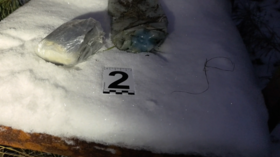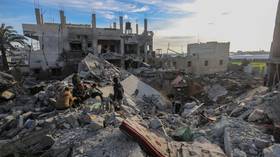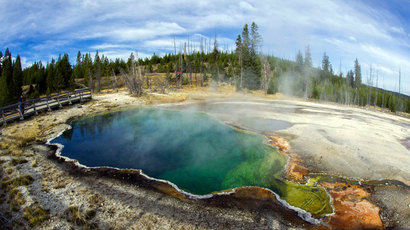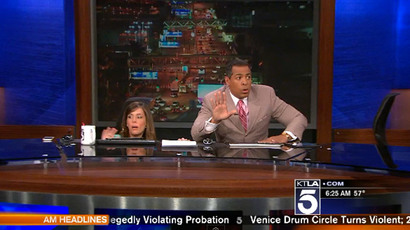Animals fleeing Yellowstone spark fears of volcanic eruption

Videos of bison seemingly fleeing Yellowstone National Park in Wyoming have sparked concerns among some bloggers that recent seismic activity could trigger the eruption of the park’s so-called supervolcano.
According to Epoch Times, multiple videos of such incidents have been posted online recently, one of which shows a herd of buffalo allegedly leaving the park and “running for their lives.” Although people behind the discussion acknowledge there’s no way to predict when the park’s massive volcano could erupt, they believe the reaction of the Yellowstone’s animals could signal some kind of alert.
On March 30, Yellowstone was struck by the most powerful earthquake it has experienced since 1980 – a 4.8 magnitude quake that did no damage, but that some believe could be connected to the various animals’ movements.
“Whether I believe this, or whether I don’t believe the story or not, I don’t know. I can tell you this story I saw this morning about the buffaloes running the street … whether or not it’s because of any activity in Yellowstone or not, I don’t know,” said blogger Jay Lee, according to the Times.
“But I’ll tell you this, whatever the case may be, that their running away from Yellowstone is an alert of some sort.”
Another video uploaded to YouTube, this time by self-described “survivalist” and “search-and-rescue expert” Tom Lupshu, claims, “Biologists aren’t sure if there’s been a stunning decline in the herd or if other factors have skewed the tally.” Lupshu also said that helium releases in the area are 1,000 times above normal levels, and accused the US Geological Survey of not reporting small quakes occurring near the volcano.
“Herds of bison running for their lives on the public roadways and they were not being chased or rounded up, the bison were running down the mountain slopes onto roadways running right past a filming crew,” he added. “They detect something vast and deadly. The Yellowstone Supervolcano is the only thing there that would fit the bill.”
The supervolcano – which was found last year to be 2.5 times larger than previously thought – has not erupted in over 640,000 years, leaving some to speculate that a blast is overdue. If and when it erupts again, the volcano could potentially spew ash over large swathes of North America and cause trouble around the entire planet.
"It would be a global event," Jamie Farrell of the University of Utah told the Associated Press last year. "There would be a lot of destruction and a lot of impacts around the globe."
Although Farrell said scientists don’t know enough to map out the next eruption’s likely arrival, he did say they’d know if magma was moving towards the Earth’s surface.
In another video, Lupshu said that increased seismic activity at Yellowstone could bring about the volcano’s eruption, but the Geological Survey has noted such activity is currently par for the course, and that between 1,000 and 3,000 earthquakes hit the area every year. The agency also stated that helium releases have “no implications about volcanic hazards.”
According to Epoch Times, the University of Utah Seismograph Stations also downplayed fears.
“There is no evidence that a catastrophic eruption at Yellowstone National Park (YNP) is imminent,” the service said. “Current geologic activity at Yellowstone has remained relatively constant since earth scientists first started monitoring some 30 years ago. Though another caldera-forming eruption is theoretically possible, it is very unlikely to occur in the next thousand or even 10,000 years.”














